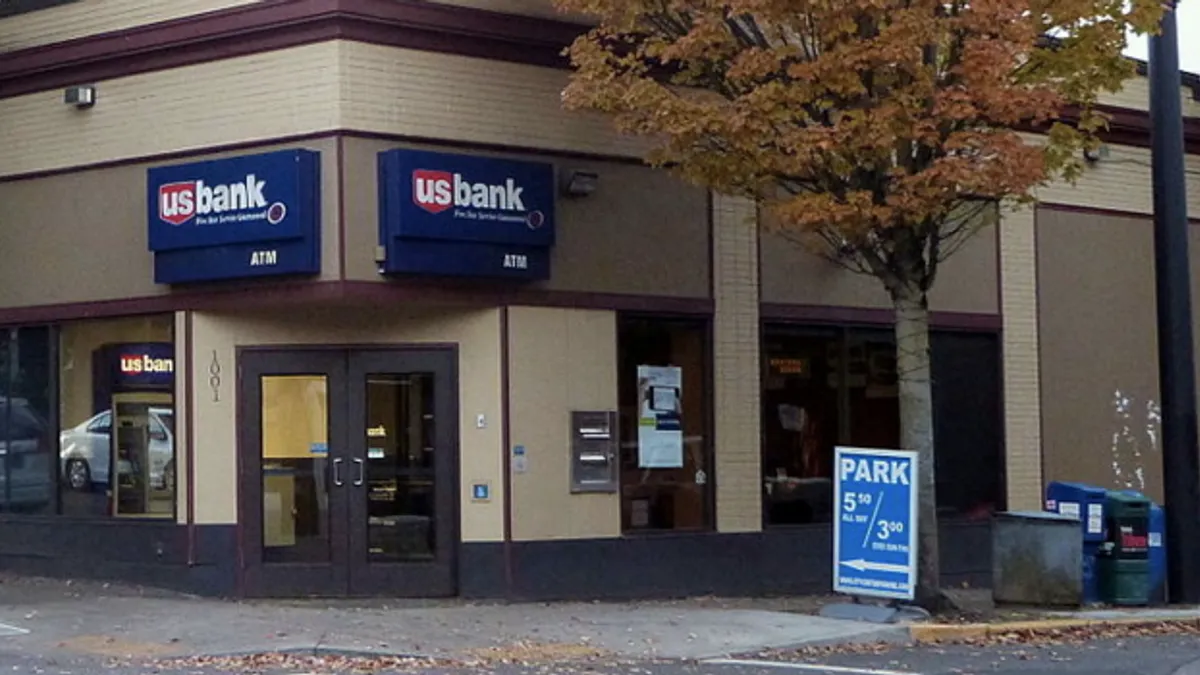Dive Brief:
-
U.S. Bank could accelerate its branch closure plans as a result of the coronavirus pandemic, the bank's chairman, president and CEO, Andy Cecere said during a virtual conference Thursday.
-
The Minneapolis-based bank, which has about 2,800 branches and 4,500 ATMs, had targeted closing 10% to 15% of its retail locations for more than a year and a half, Cecere said during the Bernstein Strategic Decisions Conference.
-
"I would expect we would accelerate and probably do more of that given the behavior changes that have occurred and those digital investments that we've made," he said.
Dive Insight:
Since the start of the coronavirus pandemic, sales are down significantly in the branch, but up on its digital platform, Cecere said.
"You have anywhere between 17% to 35% increases in digital activity occurring that used to occur in the branch," he said. "And all of that saves expense, and we're going to continue to invest in that."
U.S. Bank announced in April 2019 it planned to close more than 300 branches over the next two years. The bank said in October it would cut a number of branch employees in the low thousands but without closing any branches.
A regulatory review of the bank's anti-money laundering practices constrained U.S. Bank from shrinking its branch footprint until late 2018.
In addition to the closures, U.S. Bank plans to expand into new markets, such as Texas and Florida, with its "branch-lite model," as well as increase its number of ATMs. The branch-lite model involves placing relatively few branches across a particular area.
"I think what we found is that customers are two things: They're willing to do more on their own, from a digital device or a home, and secondly, they're willing to travel a little further," Cecere said.
As a result, the bank's branch-lite strategy could migrate across most of the bank’s existing markets.
As U.S. Bank takes stock of its physical branch model in the wake of the pandemic, other banks may do the same.
"I think everything that's happened over the last 60 days or so is probably accelerating a trend that's already happening, which is the reliance on traditional bank branches will continue to go away," Chris Britt, CEO of digital bank Chime, said during a webinar hosted by FT Partners this month.
Bank branches in the U.S. had been on the decline before the pandemic.
The number of full-service bank branches across the country declined 12% between 2010 and 2019 — from 95,000 to 83,000, according to a Quartz analysis of Federal Deposit Insurance Corp. data.
Cecere also shared his perspective on how the bank's workforce could change as a result of the remote-work reality the coronavirus perpetuated.
"The physical footprint is going to be less critical on a go-forward basis," he said. "The way people interact and their job is going to be different."
Since the crisis began, the proportion of U.S. Bank's 70,000 employees working from home increased from less than 10% to more than 75%, Cecere said.
"A lot of those employee positions may remain at home. So the work environment will change, the interaction with customers will change," he said. "I think it fits our model, in terms of understanding the digital investments that are important, and that has been a focus for us for the last couple years."











